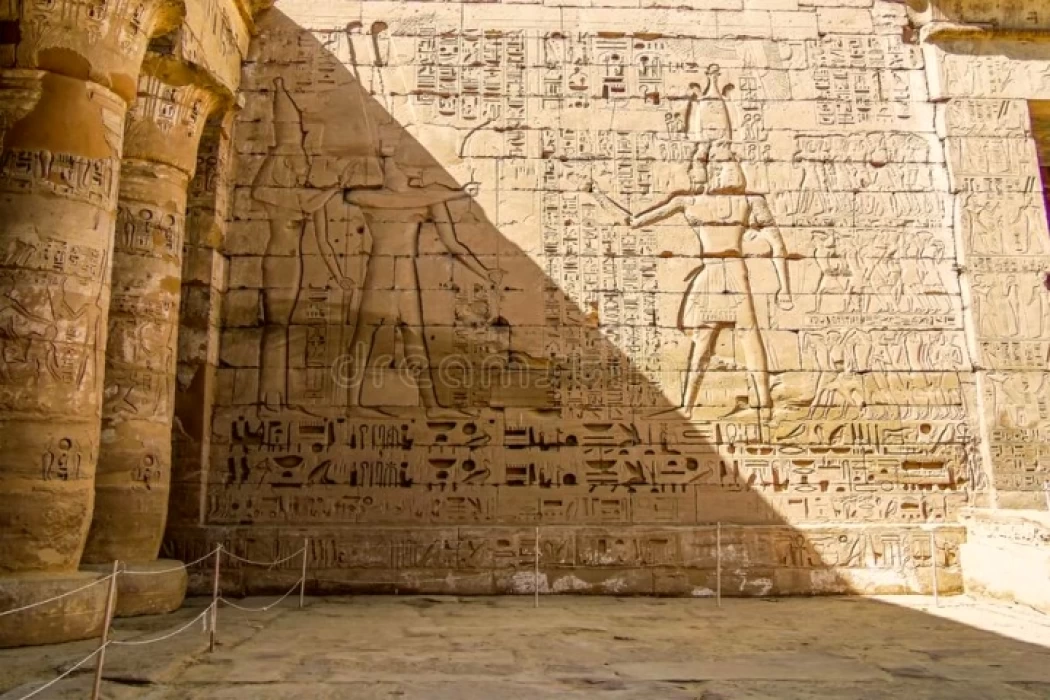
History of Temple of Deir Shelwit
It is located on the West Bank of the Nile in Luxor, 1 kilometer from Malkata, and about 4 kilometers south of the city of Habu.
Its entrance is facing South. There are not many decorations on the outer walls, but inside, the carvings are well preserved. The mausoleum is surrounded by a corridor from which side chapels and the purification Hall(English: wabet) can be accessed; the roof can also be reached by stairs from this corridor. On the south side of the outer wall, the use of some stones from older buildings is noted, since the inscriptions on these stones seem to be from the temple of Ramses III. The entrance to the temple (English: propylon)is located 60 meters to the east of the temple, dazzlingly decorated on all sides. The importance of the temple of ISIS in the Shalwit monastery is due to the rarity of religious buildings from the Greco-Roman era in this area, the only one for ISIS and not for the Theban Trinity.
History of the temple
According to the inscriptions on the entrance, the construction of the temple of ISIS began around the beginning of the first century of the Common Era. No previous construction is known to have existed at this location. According to one theory, the construction of the temple began during the reign of Nakhtenpo II and reached its final form during the Greco-Roman era.
Excavations
Karl Richard Lipsius first examined the temple in the middle of the 19th century, but did not give a detailed description of it. A French expedition led by Christian Zevi studied the entrance inscriptions and published their research in 1992. Between 1971 and 1979, archaeologists of Japan's Waseda University worked on the site, cleaned the surrounding wall and the temple courtyard from debris, and dug a temple well that was filled with pottery shards. Thirty-two layers of debris were revealed in the well, reaching a depth of 4 meters below the surface of the Earth, where drilling became impossible for the presence of water.
Temple decorations
The inscriptions of the temple date back to the Greco-Roman period and are similar to those of the temples of Dendera and Philae. On the walls and entrance cartridges of Hadrianus, Antoninus Pius, Galba, Otho, Vespasian and Julius Caesar can be seen. And on the stones borrowed from other temples used in the outer wall, it is noted that the style of inscriptions dates back to the era of the New Kingdom.














